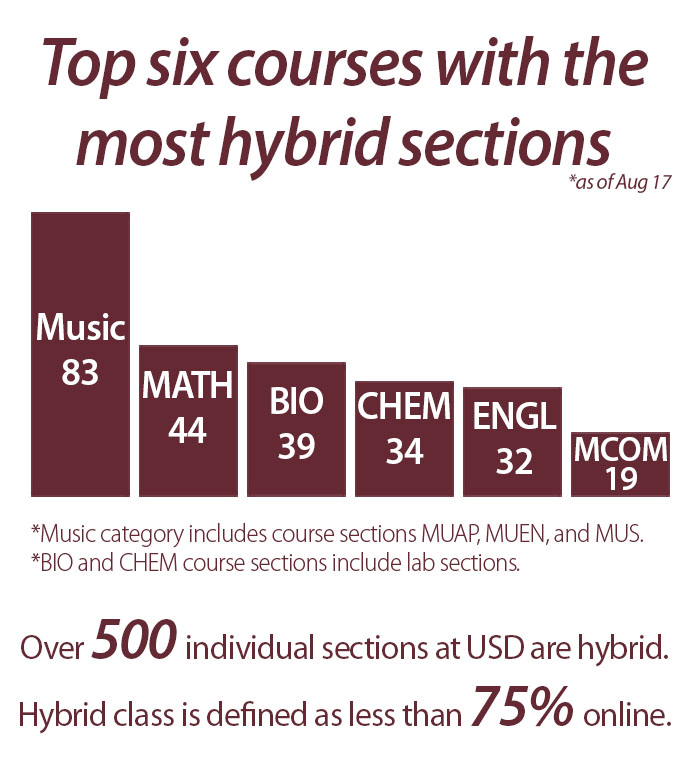
Hybrid learning implemented across campus
As students transition back to campus and face-to-face learning, they are also adapting to hybrid learning. Hybrid courses are being offered this semester across all departments at USD.
In order to be classified as a hybrid course, classes have to meet face-to-face at least 25% of the time, according to the Board of Regents’ formal definition. Provost Kurt Hackemer said most hybrid classes at USD are going beyond that requirement.
For most professors, Hackemer said, they are splitting their classes up by days — for example having students come on Tuesday or Thursday, not both. This, Hackemer said, helps keep a limited number of students in a classroom at a time.
Hackemer said which classes were made hybrid was mainly based on the size of the classrooms.
“We lost a lot of classroom seats. We went in and we physically distanced every classroom on campus” Hackemer said. “In our big lecture halls, we lost at least 75% of capacity.”
Prior to this year, there were 19 classes that held more than 50 students, now because of social distancing measures, there are two — Churchill Haines 118 and Aalfs Auditorium. Because the seating is limited, Hackemer said there was no option for larger classes besides going hybrid.
At the time of publication, there are roughly 500 courses at USD being taught in a hybrid format. One of those classes is Psychology 101. There are two sections being taught as a hybrid and one smaller class being taught face-to-face.
Douglas Peterson, chair of psychology, is teaching one of the hybrid courses of Psych 101. Peterson said making the switch to hybrid classes was challenging, but he said he had a good team of professors to collaborate.
“Starting in June, we began having weekly Zoom meetings where we would just talk about ideas,” Peterson said. “It was nice to have that much lead time because we knew it was going to be hybrid. That planning process was really good because that team got together and we talked through ideas and we made changes.”
Peterson said while he misses being in the classroom, it has been fun challenging the way he teaches.
“I hate to say this is a terrible circumstance, but it was kind of fun,” Peterson said. “It gave us an opportunity to think about the way we teach, and the way students learn in a different way.”
Hackemer said he appreciates students and faculty’s willingness to be flexible while issues get worked out. After the issues are worked through, Hackemer said he thinks there will be many advantages to hybrid learning.
“When this gets better, we’re gonna find some real advantages to hybrid learning, if you do it right,” Hackemer said. “This is forcing a lot of people to explore a new way of teaching, and our faculty is really creative. I think you’re gonna see a lot of faculty get more comfortable with those kinds of things.”

